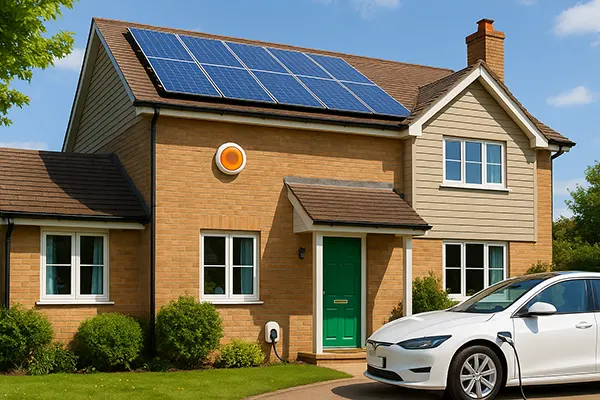
Cybersecurity for Home Protection: How to Safeguard Your Alarm and Smart Home Systems from Cyber Threats
As smart homes become an integral part of modern living, cybersecurity plays a crucial role in protecting personal safety and privacy. With interconnected devices controlling everything from locks and cameras to lighting and alarms, the risk of cyberattacks increases significantly. Understanding how to secure these systems is essential to prevent hackers from gaining access to your home environment and personal data.
The Growing Threat of Cyberattacks on Smart Homes
Over the past few years, smart home technologies have revolutionised home security systems, offering convenience and remote access through mobile apps and Wi-Fi connections. However, this interconnectivity also exposes users to potential cyber threats. Criminals can exploit weak passwords, outdated firmware, or unsecured networks to take control of alarm systems or even disable them entirely.
In 2025, the number of smart home devices worldwide is estimated to exceed 1.2 billion, increasing the potential attack surface for hackers. Many users remain unaware that each connected gadget, from smart doorbells to thermostats, can serve as a gateway into the entire home network. Cybercriminals often target these devices to steal sensitive information or to use them in larger attacks, such as botnets.
The consequences of a compromised home security system can be severe. Beyond financial loss, such breaches can threaten physical safety and personal privacy. To mitigate these risks, homeowners must prioritise proactive cybersecurity measures and understand the vulnerabilities of their smart home ecosystem.
Common Vulnerabilities in Smart Home Systems
One of the most common vulnerabilities lies in poor password management. Many users still rely on default or easily guessable passwords, making their systems easy targets. Devices with factory settings often use identical credentials, and unless these are changed, attackers can exploit known combinations to gain access.
Another issue is outdated firmware. Manufacturers regularly release updates to fix security flaws, but users frequently ignore or delay installing them. Outdated software creates openings for cybercriminals to exploit known vulnerabilities and compromise the device’s integrity.
Finally, insecure wireless networks represent a major weak point. Home Wi-Fi networks that lack encryption or use outdated protocols like WEP can easily be intercepted. Hackers can eavesdrop on communications or inject malicious commands into connected devices. Ensuring strong encryption standards and network segmentation significantly reduces these risks.
Practical Strategies to Strengthen Home Cybersecurity
To safeguard a smart home effectively, adopting a layered security approach is essential. This means combining multiple protective measures that work together to minimise exposure. The first step is to secure your Wi-Fi network by setting up WPA3 encryption, creating a strong and unique password, and disabling remote management unless absolutely necessary.
Next, homeowners should invest in devices from reputable manufacturers that provide regular security updates. It is advisable to register products and enable automatic firmware updates where possible. Avoiding unverified or generic devices reduces the likelihood of encountering hidden backdoors or poorly designed software.
Another important aspect is network segmentation. By separating smart home devices from personal computers and mobile devices on different networks, even if one device is compromised, the rest remain protected. Many modern routers allow users to create guest networks or IoT-specific connections, which can limit potential breaches.
Advanced Security Measures for Tech-Savvy Users
Those comfortable with technology can further strengthen their smart home’s defences through more advanced practices. Setting up a Virtual Private Network (VPN) for the home network adds an extra layer of encryption, making it harder for intruders to intercept data. A VPN can also hide the IP address of smart devices, enhancing privacy.
Regular security audits are another valuable practice. By periodically reviewing device logs and access permissions, users can detect unusual activity early. Many security-focused apps and router dashboards offer real-time monitoring, alerting homeowners to potential threats or suspicious logins.
Implementing two-factor authentication (2FA) wherever possible further enhances protection. By requiring an additional verification step beyond passwords, unauthorised access becomes far more difficult. This feature is increasingly supported by smart home platforms, providing a reliable extra layer of defence.

The Role of Artificial Intelligence in Home Cybersecurity
Artificial Intelligence (AI) has become a critical ally in defending against cyber threats. Modern smart home systems increasingly rely on AI algorithms to detect unusual patterns and respond automatically. For instance, if a system identifies an unrecognised device attempting to connect, it can immediately block access and notify the homeowner.
AI-driven solutions can also help predict and prevent attacks. By analysing data across millions of connected devices, these systems learn to recognise early indicators of compromise. This predictive capability enables them to act before significant damage occurs, making AI an indispensable part of the future of home cybersecurity.
However, users must also ensure that AI tools themselves are secure. Poorly configured or unmonitored AI systems may inadvertently expose sensitive data. Regular oversight, transparent data policies, and partnerships with trusted technology providers remain essential to ensure that AI enhances rather than undermines cybersecurity.
Looking Ahead: The Future of Smart Home Protection
As cyber threats evolve, so too must our approach to home protection. In the coming years, greater emphasis will be placed on interoperability standards, ensuring that devices from different brands can communicate securely. Governments and international organisations are already developing regulations that will require stronger encryption and clearer data-handling practices.
Consumer awareness will also play a key role. Educating users about basic security hygiene, such as updating devices and recognising phishing attempts, is vital. Awareness campaigns and collaboration between manufacturers and cybersecurity experts will help reduce risks for everyday households.
Ultimately, the security of a smart home depends not just on technology but on human vigilance. Regular maintenance, careful configuration, and informed decision-making remain the best defences against the growing wave of cyber threats in 2025 and beyond.




